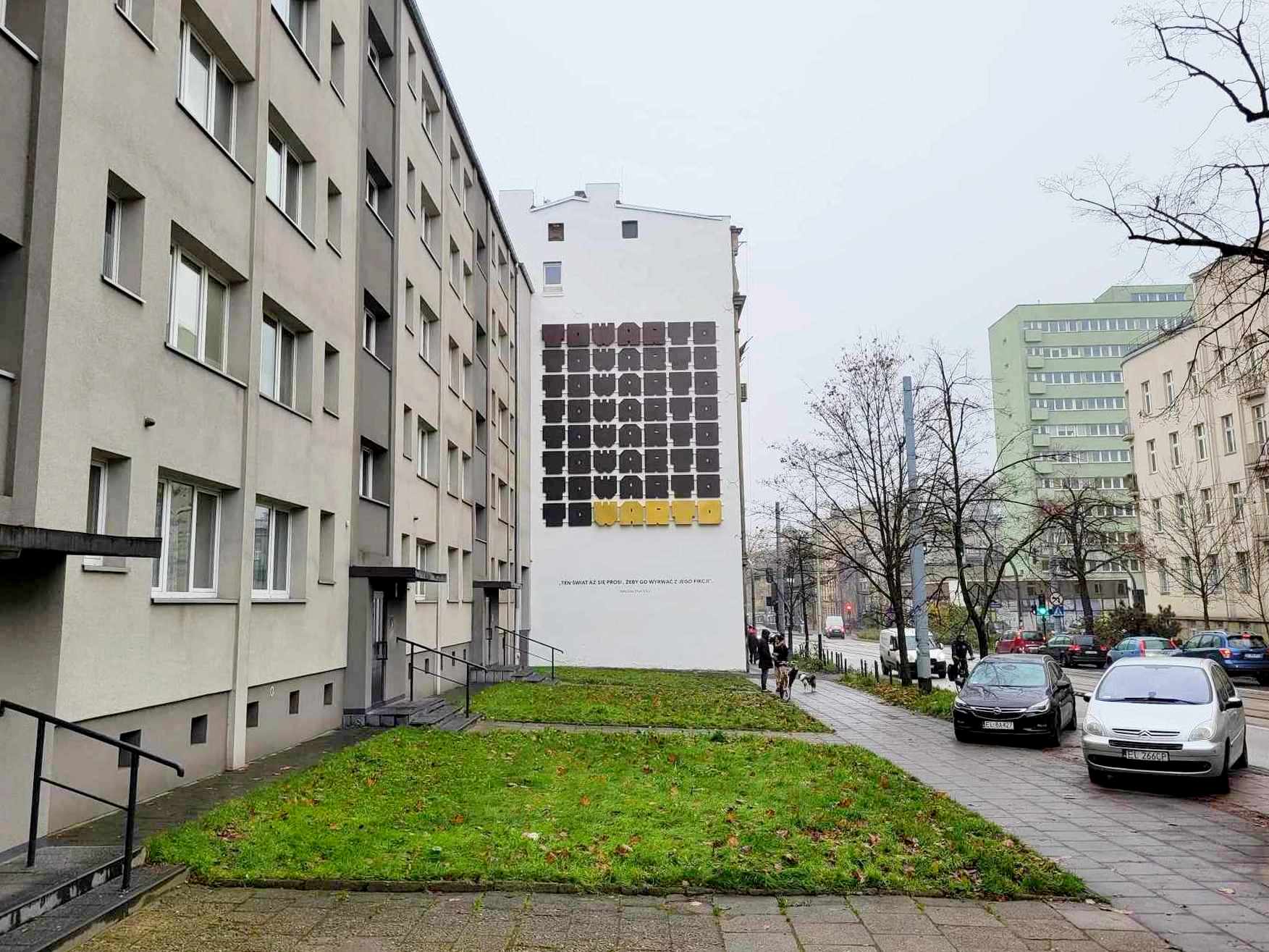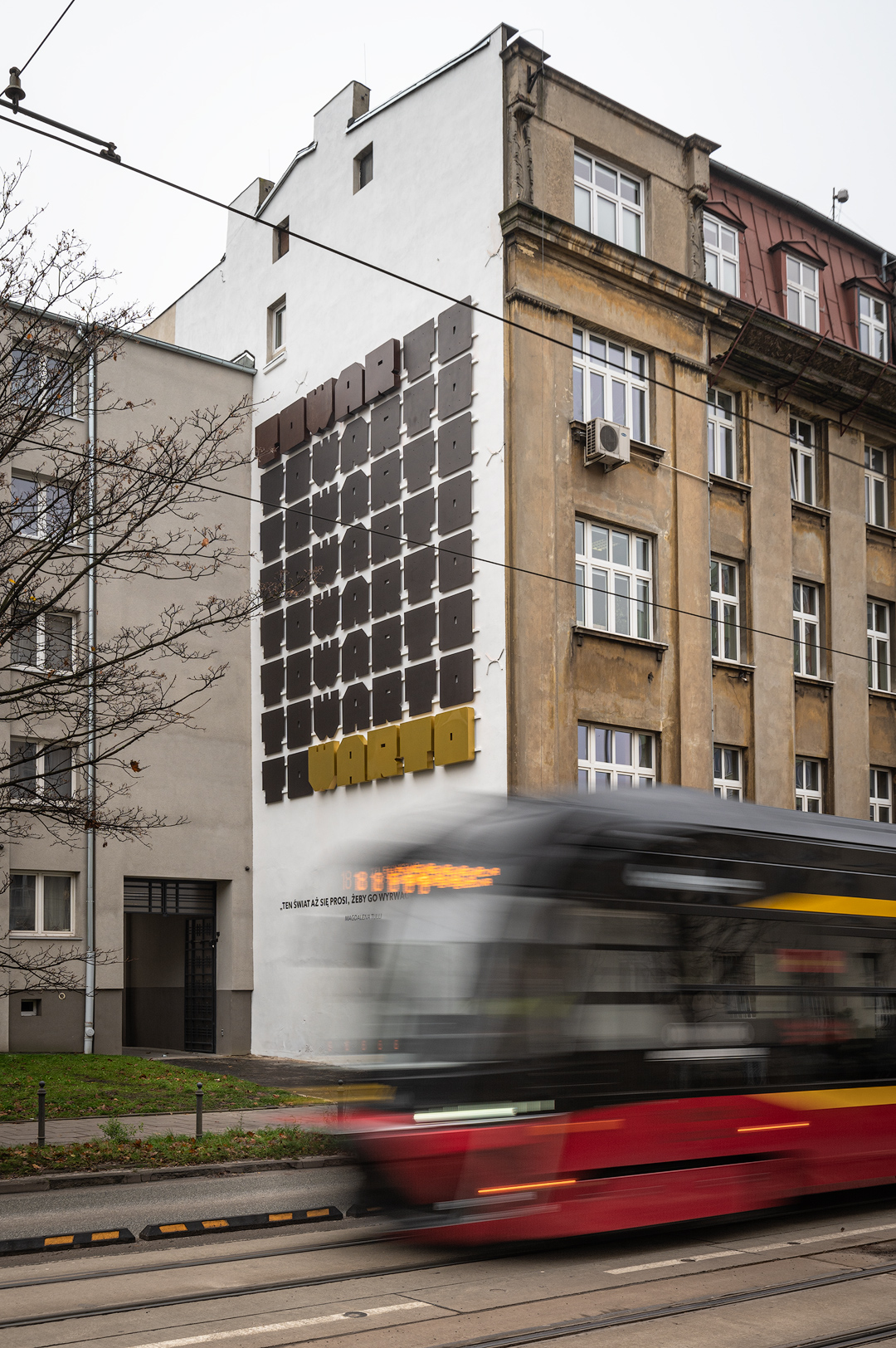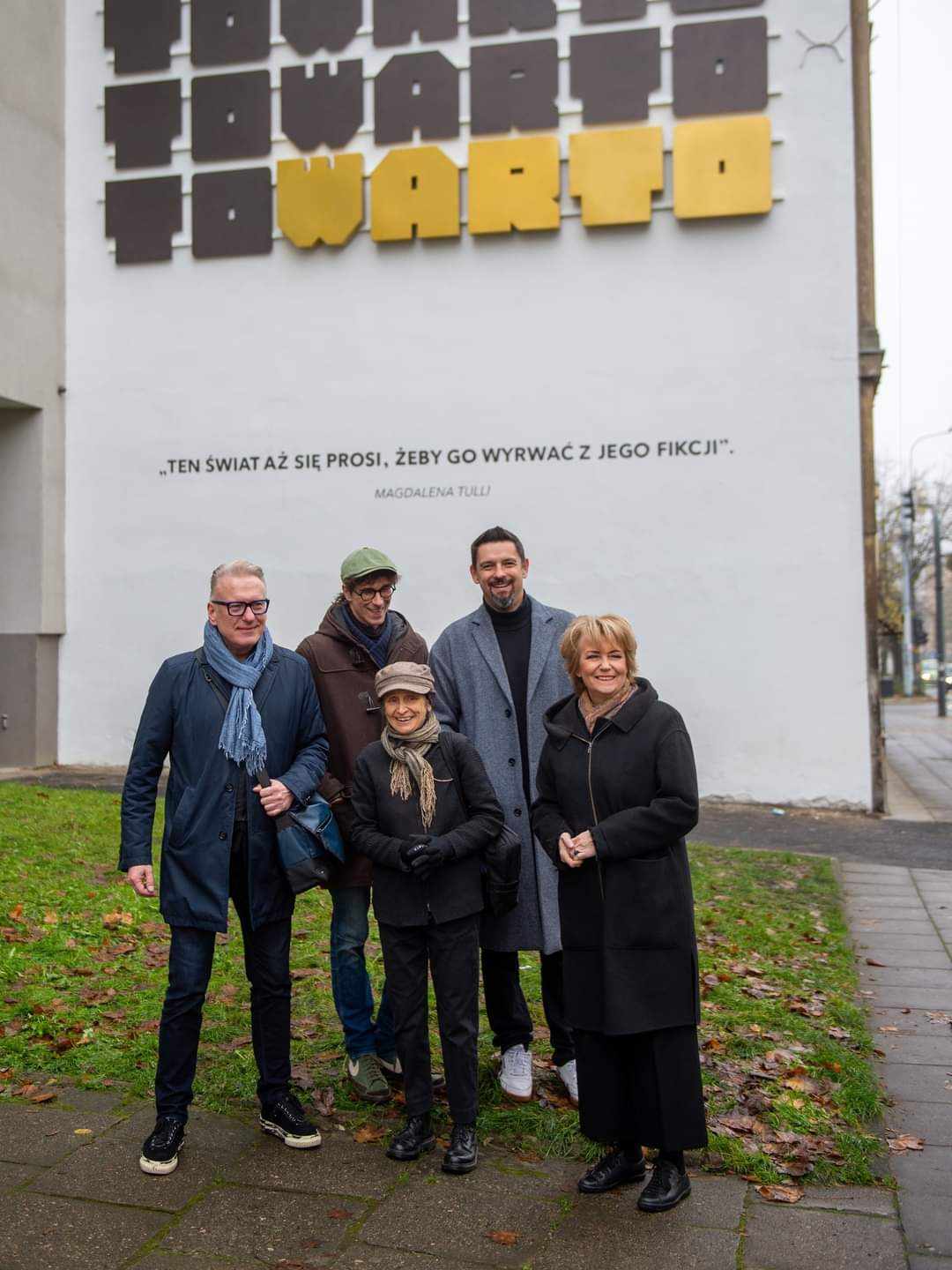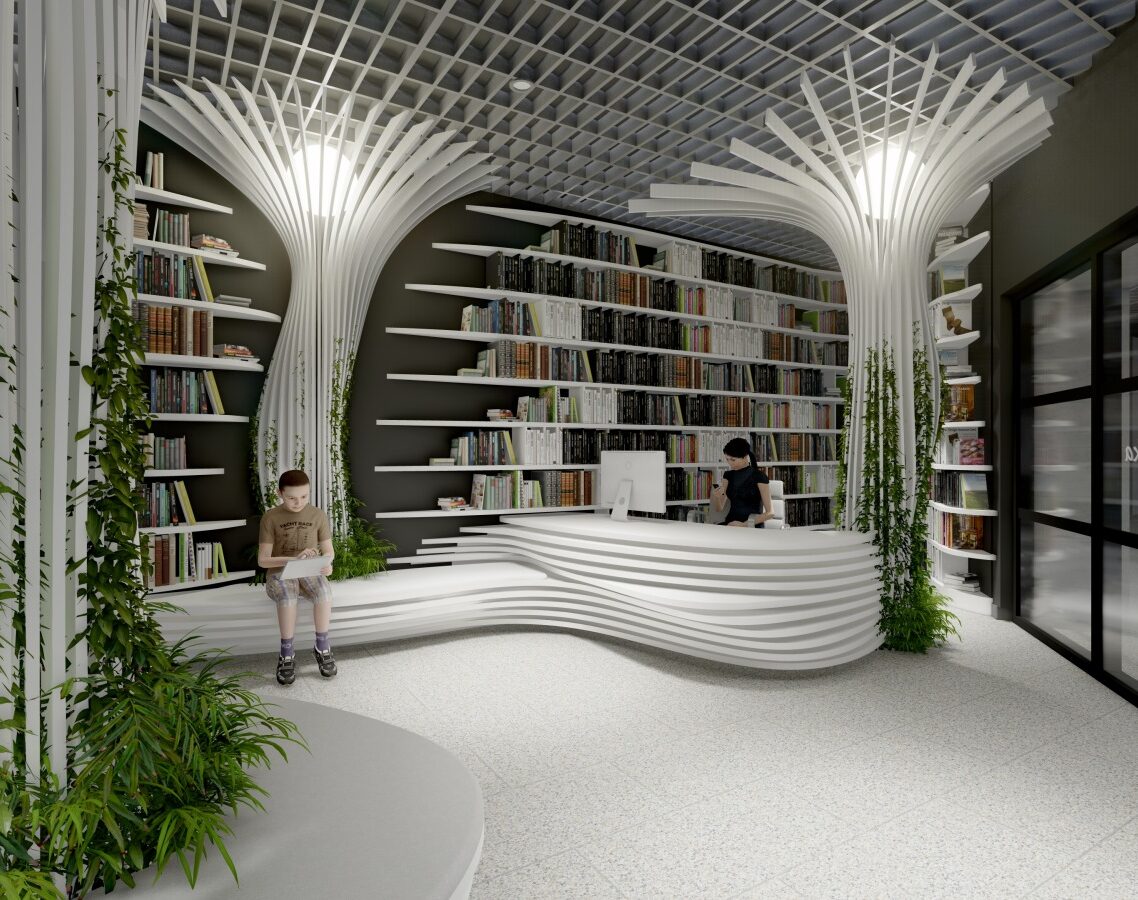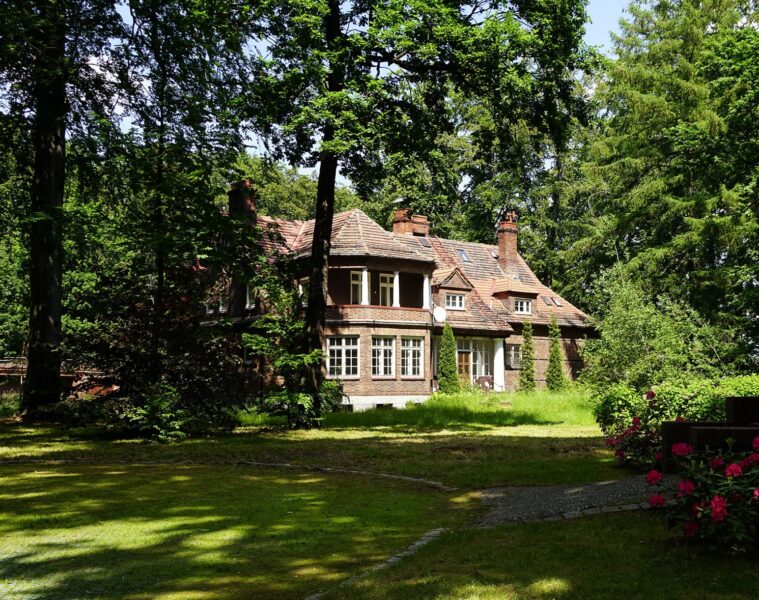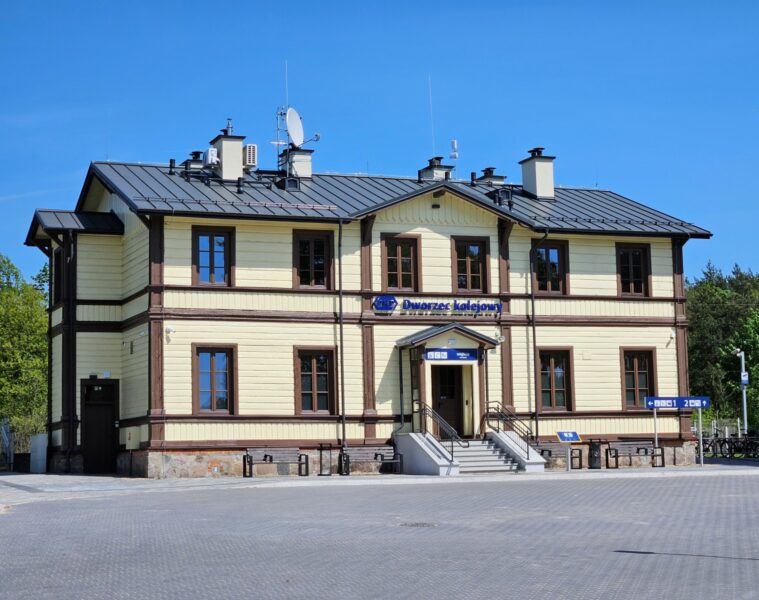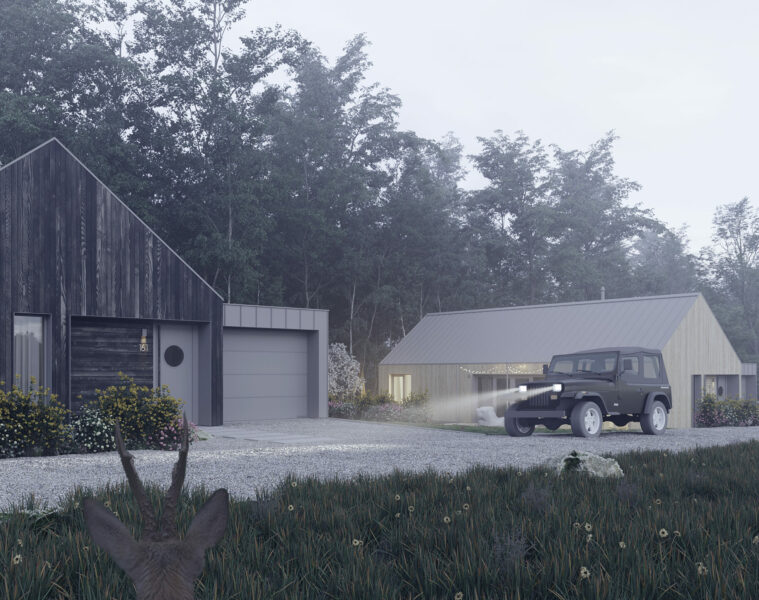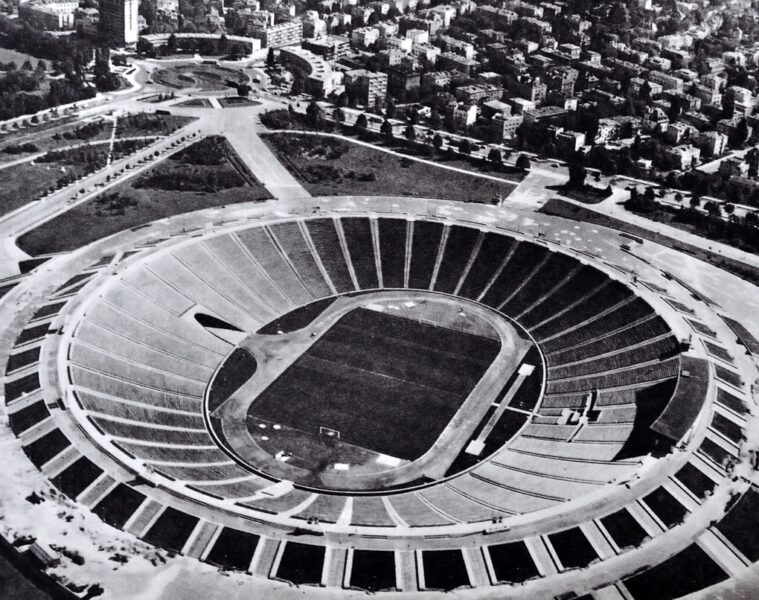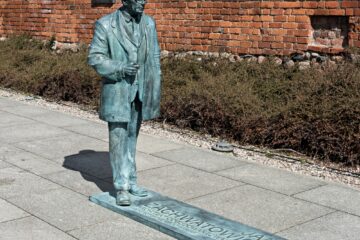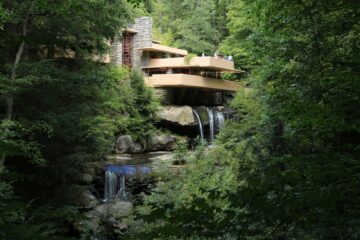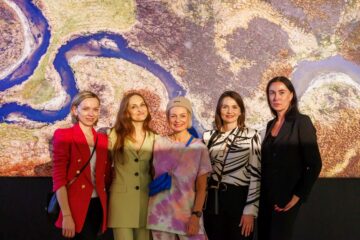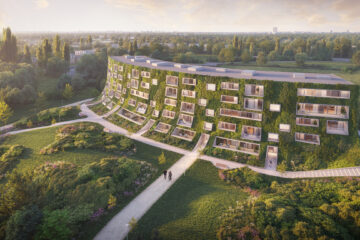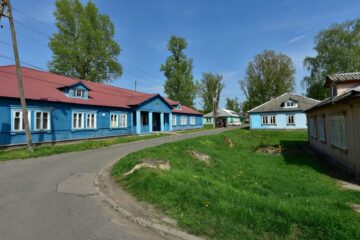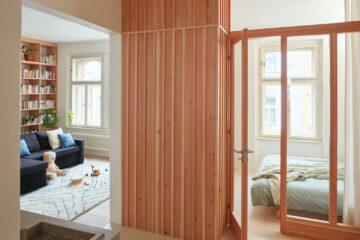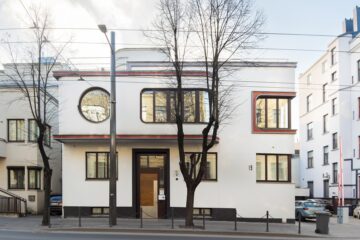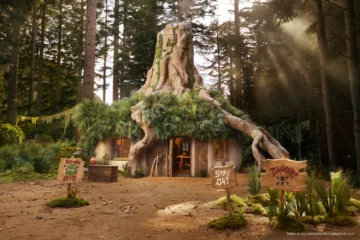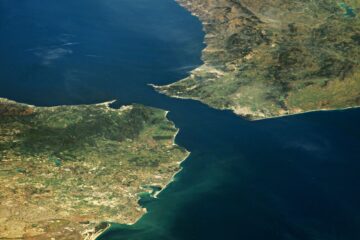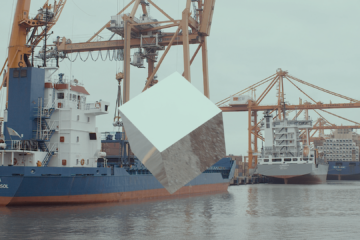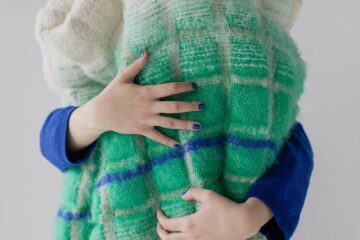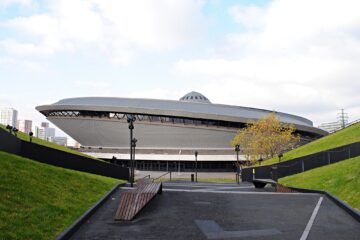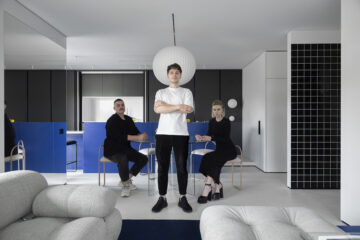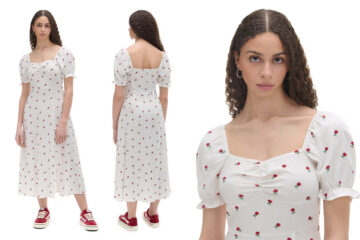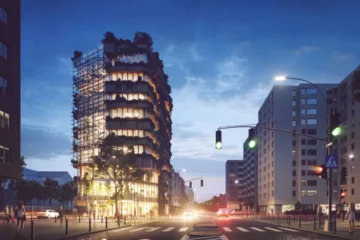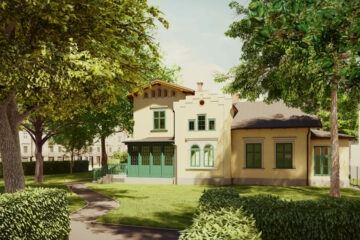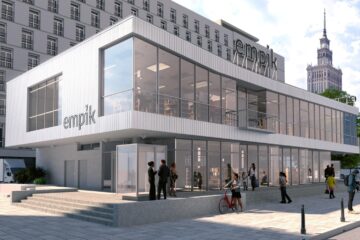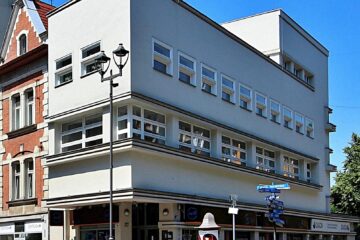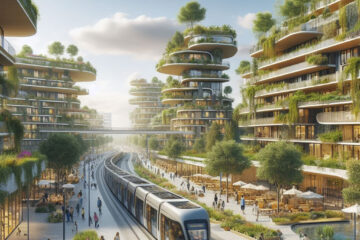It can be seen on the side wall of a building at 77 Narutowicza Street in Łódź. The ‘towarto’ bas-relief is 9 m high and 8 m wide. The resulting content is an interpretation of a fragment of a text by one of Poland’s most prominent writers, Magdalena Tulli
“This world begs to be ripped out of its fiction“. Such an inscription can be read at the bottom of the installation. Graphically, the metal relief depicts a game/dialogue between the words ‘commodity’ and ‘worth’. The words are anagrams, i.e. they consist of the same letters but have a different order and meaning. Both alternate and have been arranged in the order of eight lines arranged in a square composition. Most of the words have been made of flat sheet metal. Two words are spatial, that is, they are solid: “GOOD” in the upper left corner and “WORTH” in the lower right corner. The word ‘GOOD’ has been created from corten steel and has a rusty brown-orange tarnish, but has been protected from further corrosion. The word ‘GOOD’ has been painted with a special gold paint so that it shines, giving a slightly iridescent effect
The text excerpt itself comes from the book entitled. “Noise” published in 2014
The author of the relief is graphic designer Łukasz Zbieranowski. He is the owner of the graphic design studio ‘Fajne Chłopaki’ as well as the bindery and brand ‘Nieladaco’. Within the graphic studio, his main field of activity is identity design, book covers, publication layouts, posters and copywriting. He works on the borderline between art and applied visual communication
Modern man has a great facility for turning everything into a commodity. He has also commodified such intangible spheres as relationships, spirituality, love or self-development. It is only when the paradigm is reversed from economic profitability to non-material value that we are able to create a better world and break out of this consumerist fiction. Do we still value that which has no price? In the relief of ‘towarto’, all the words are available in the field of vision at the same time. It is up to us which of them we pay attention to – explains the project’s author
The author of the selected literary excerpt is Magdalena Tulli, a Polish writer who has reached the final of the Nike Literary Award five times.
The words TOWAR and WARTO have a lot in common – two syllables each, the same, but standing in reverse. When you look at this relief from its upper left-hand corner, you see a plethora of goods, promises, suggestions, ready-made convictions. Is it possible to become saturated with them? Everything that happens there is the material of the fiction that this world lives on, believing that reserves are unlimited, the planet will not be moved by anything. When we look from the lower right corner, we see what it takes to make life meaningful – namely love, compassion, hope. And scarcity of goods, like scarcity of meaning, can lead to unhappiness, to hatred and hopelessness. So, from the bottom right corner, one can also see some common duty. The relief shows the image of VALUE as the antithesis of the image of GOOD. The two spheres of reality simultaneously collide and merge, as here. It is good to know this,” says Magdalena Tulli
After the mural entitled “Sobie”, interpreting a fragment of Olga Tokarczuk’s text, on the wall at 4 Ogrodowa street and the neon sign “Każdy chce jakoś nie żyć”, inspired by a text by Dorota Masłowa, on the façade at 21/23 6 August street (we wrote about it HERE), the relief “towarto” is the third object created as part of the project entitled “Streets of Words” – a broader artistic endeavour in urban space, organised by the Łódź Events Centre
The ‘Streets of Words’ project aims to create visual interpretations of various literary passages in urban space. It is not about template placement of sentences from books in the city. Here, the artists are tasked with creating visual projects whose form will correspond to the content in the most interesting and accurate way possible. The greatest value of the project lies in the attempt to holistically match the content of a given text with the way it is presented, i.e. the relationship of the content to such aspects as e.g. the historical background, the architectural context, the material chosen for its representation, the scale, format, colour, structure of a given work, etc. Individual realisations can be ephemeral or can function permanently. Consideringthe multitude of possibilities and a vast arsenal of technical and structural solutions, the consistency of matching the content with the form seems to be a very broad and extremely interesting area for artistic exploration,’ explains Michał Bieżyński, the originator and curator of the project on behalf of the Łódź Events Centre

Mariusz Szczygieł – reporter, writer, Journalist of the Year 2013 in the Grand Press competition – was invited to join the project. In the Ulice Słów project, Mariusz Szczygieł, is responsible for the literary layer, i.e. the selection of specific excerpts. He selected fragments of texts by Polish writers (including Hanna Krall, Krzysztof Varga, Krystyna Miłobędzka…), from which the two productions mentioned above were already made last year
In finding the right quotes for this project, I wanted passers-by and the citizens of Łódź to have contact with ambitious literature. Nowadays, even those who do read cater mainly to genre literature: crime stories, romances, celebrity biographies or hardly literary reportage. Such literature has a tendency to be predictable, schematic and – sadly – full of established phraseological associations. That is why I was keen for quotes that give food for thought, are non-obvious, surprising – in other words, these street works will be some kind of thought challenge for the reader. A quote from Olga Tokarczuk’s novel could successfully find its way into a volume by Krystyna Miłobędzka and be treated as one-verse poetry. What I had in mind was a drilling thought with which the casual reader or reader will wander the streets. As for the content of these quotations and their philosophical charge, I was guided by my own condition, namely a sense of transience and a search for answers: what is life, what is its meaning and why must it be absurd? Myintuition tells me that if ,in the midst of our daily running around, we come across a confession by a writer or a novelist that expresses our fears, anxieties and doubts, it can be very useful for us,” says Mariusz Szczygieł, literary curator of the project
The towarto bas-relief has an indefinite duration and is part of a broad programme of activities related to art in the urban space, which the Łódź Events Centre has been organising for the past eight years. The aim of the programme is to create modern artistic objects that are permanently or temporarily incorporated into the city landscape. An important premise of the project is the creation of an open art gallery consisting of works that are as diverse as possible – sculptures, bas-reliefs, artistic installations, murals, site-specific realisations. Some of the most well-known realisations include the 1,300-gauge steel-rod bas-relief titled “Silence” on the wall at ul. silence” on a wall at 13 Wólczańska Street; the floral installation “Nostalgia” at the tram stop in Dąbrowskiego Square, the neon sign “Inspiration/Exhalation” on a wall at 21 Narutowicza Street, the neon sign “Seagull” on a chimney at 10 Tuwima Street, the ceramic mosaic entitled “State of Mind” on a wall in the former town centre of Wólczańska. “State of Mind” on the wall at ul. Zachodnia 93 or the sculpture titled “The wrong weight” on the ground. “Wrong weight” on the grounds of the Łódź Fabryczna railway station. The artistic activities are not organised on the basis of a festival that takes place at a specific time. They function as an urban art programme in which individual realisations are created in different months
Title: ‘towarto’
Project author: Łukasz Zbieranowski
Address: 77 Narutowicza Street
Literary curator: Mariusz Szczygieł
Project curator: Michał Bieżyński
Organiser: Łódź Event Centre
The bas-relief was created as part of the “Streets of Words” project
source: Michał Bieżyński
Read also: Łódź | Facade | Art | Murals | Detail | Sculpture | whiteMAD on Instagram

